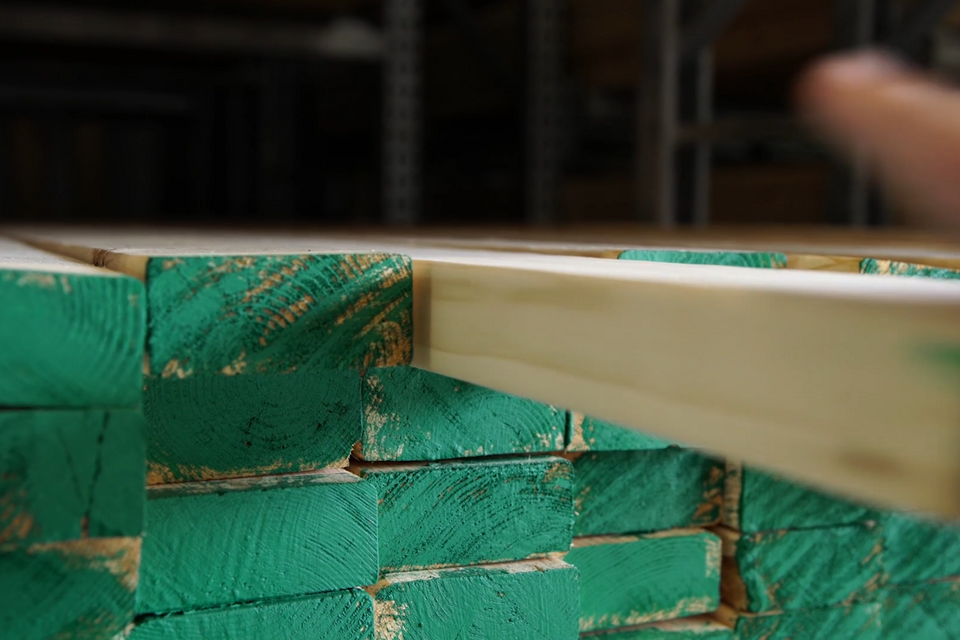With the advent of spring and longer, warmer days, business has been brisk but the unsteady political and economic climate caused by the Russian invasion of Ukraine has cast a pall over the lumber market. Inflated lumber prices, surging fuel costs, a fluctuating stock market and uncertainty about the direction of future business has sent many buyers to the sidelines to re-evaluate their purchasing intentions for the rest of the season, based upon what could develop. Prices have been ratcheting up since last September, coming close to hitting last year’s record run-up. Knowing that a correction was inevitable and with last year’s retraction still fresh in their minds, buyers contemplated with every order whether their decision to buy would make them top-heavy with high-priced inventory or if it would allow them to meet demand and remain competitive. Despite the pause, extended lead times and the inability to obtain prompt lumber from mills or local distribution remained an issue. As a result, buyers used their best assumptions of what could happen, with most procuring a little more than they wanted to in an effort to cover future business, which helped to keep prices propped up. As the month progressed, trucking did improve and the volume of wood available for sale was building, especially in other areas of the nation. At the mill level, order files thinned, leaving more opportunity for cracks in prices to occur. On the retail level, shortages of key building material components (such as engineered wood, insulation and shingles) delayed the start or completion of jobs (which in turn slowed invoiced sales) but the order taking remained steady. As we ease in to April, prices are firm but cracks are developing as lumber dealers’ digest their inventory and observe the direction of business going forward.
It’s a common assumption from those outside our industry that it’s a simple one, but that couldn’t be further from the truth. Not only has the assembly of a home become extremely complicated due to code compliance and required installation practices, but many of the components themselves are now complex. To simply look at a trim board, piece of decking or roof shingle (to name a few) may not be terribly impressive, but when you think about the components (wood species, adhesives, preservatives, plastics and coatings) and the process (harvesting, milling, manufacturing and shipping) required to get it here on Cape Cod, it’s something to consider. Many of these products are imported and incorporate components sourced from other regions of the world, making them very vulnerable to supply interruptions. This, of course, is nothing new to any of us after living with the supply shortages we’ve endured over the past few years, but having to deal with supply disruptions doesn’t appear to be going away any time soon. Be it pandemics, political unrest, natural disasters, environmental regulations or labor shortages, we will always suffer the consequences of events beyond our control. However, we must learn how to deal with them and the best strategy comes from anticipating an issue and planning accordingly.
More than ever, it’s key to be thinking as far ahead as you can about your jobs and consulting your Shepley sales person to implement a plan that best positions you for the successful outcome of your job.
More than ever, it’s key to be thinking as far ahead as you can about your jobs and consulting your Shepley sales person to implement a plan that best positions you for the successful outcome of your job. We do understand that it may sound trite to “simply plan ahead” when there are so many factors that can derail jobs, but every conversation about an upcoming project also needs to include a discussion on product contingencies, as the objective can no longer be just to nail down and adhere to what we know and are familiar with today, but also about what flexibility and options may be used in the event that there is a supply interruption. Knowing today what options you may need to consider will best prepare you, your customer and your suppliers in anticipating the aesthetics, budgets, labor and timelines required to finish the job. For instance, can you use PVC trim instead of PFJ? A different brand, model or color of architectural roof shingle? How about a different species of wood shingle or decking? Over the past few years, it’s been easy to put too much faith in being able to obtain the old standard products when we need them (especially where we have been in unchartered territory with respect to supply) but, in a lot of cases, it has gotten even more difficult. Considering and learning about contingencies should be top of mind and, if done in conjunction with the initial review of the project, will better prepare us all in fulfilling wants and needs. Please know that we are expert in creative collaborations and will turn over every rock we can in order to find a solution to fulfilling “Plan A” but, in the event that it cannot be achieved, a good “Plan B” can help us all sleep at night. Thank you for your business.
